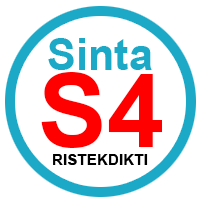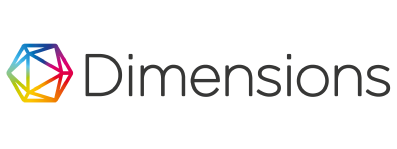Peran Insentif, Perilaku Kepemimpinan, dan Budaya Organisasi terhadap Penguatan Komitmen Organisasi
Abstract
This study intends to find out about the truth that incentives given to employees, effective leadership behavior, and existing organizational culture are thought to have a role in strengthening organizational commitment. The survey is conducted in the production department of a company. Respondents consist of active employees who work at PT. KJA which has 43 employees in the production department. The sampling technique is by census. Regression model, t test, and F test are SPSS-assisted analytical tools. The results showed that incentives, leadership behavior, and organizational culture were proven to have a role in strengthening organizational commitment
References
Al-Sada, M., Al-Esmael, B., & Faisal, Mohd, Nishat. (2017). Influence of organizational culture and leadership style on employee satisfaction, commitment and motivation in the educational sector in Qatar. Euro Med Journal of Business, 12(2), 163-188.
Bass BM., & Avolio BJ. (1995). The Multifactor Leadership Questionnaire (form R, revised). Mind Garden, Inc. Palo Alto, CA.
Brown, H. Douglas. (2003). Language Assessment Principles and Classroom Practices. Longman University Press. California.
Cascio, W. (1995). Managing Human Resources, Productivity, Quality of Work Life, Profit, fouth edition. Mc GrawHill.
Cameron, K.S., & Quinn, R.E. (1999). Diagnosing and Changing Organizational Culture: Based on the Competing Values Framework. Reading, MA: Addison-Wesley.
Chaganti, R., Cook, R.G., & Smeltz, W.J. (2002). Effects of styles, strategies, and systems on the growth of small businesses. Journal of Developmental Entrepreneurship, 7(2), 175-192.
Chen, C. (2011). The mediating effect of employees’ experience of inclusion and the moderatingeffect of individual work values on the relationship of authentic leadership style and organizational commitment. Alliant International University. San Diego.
Cohen, A. (2007). An examination of the relationship between commitments and culture among five cultural groups of Israeli teachers. Journal of Cross-Cultural Psychology, 38(1), 34-49.
Darmawan, D. (2007). Budaya Organisasi dan Pengaruhnya terhadap Kebebasan Pengambilan Keputusan Manajerial. Media Komunikasi Ekonomi dan Manajemen, 5(2), 40-53.
Darmawan, D. (2008). Kajian Teoritis Variabel Kepemimpinan, Jurnal Media Komunikasi Ekonomi dan Manajemen, 6(3), 21-35.
Darmawan, D. (2010). Pengaruh Kompetensi Kerja, Budaya Organisasi, Kepemimpinan dan Kompensasi terhadap Loyalitas Kerja. Jurnal Ilmu Sosial, 4(2), 63-76.
Darmawan, D. (2010). Budaya Organisasi. Metromedia. Surabaya.
Denison, D.R., & Spreitzer, G.M. (1991). Organizational culture and organizational development: A competing values approach. Research in Organizational Change and Development, 5, 121.
Delves, Peter J. (2011). Roitt's Essential Immunology, Includes Desktop Edition. Wiley-Blackwell.
Dwahan, V., & Mulla, Z. R. (2012). The role of pay and leadership in developing organizationalcommitment. South Asian Journal of Management, 18(2), 60–75.
Han, K., & Kim, A. 2018. Differential impact of short-term and long-term group incentives. Employee Relations, 40(3), 549-564.
Erkal, N., Gangadharan, L., & Koh, B. H. (2018). Monetary and non-monetary incentives in real-effort tournaments. European Economic Review, 101, 528−545.
Ijaz, M., & Khan, A. (2013). The impact of non-financial incentives on employees’ motivation. IOSR Journal of Business and Management, 15(4), 37−46.
Lawler, E. E., Morhrman, S. A., & Ledford, G. E. (1995). Creating high performance organizations: practices and results of employee involvement and total quality management in Fortune 1000 companies. Jossey-Bass. San Francisco, CA.
Lee, K., & Kulviwat, S. (2008). Korean Workers’ Motivation Tools: Commitment and Incentive-Based Motivation and Their Relative Impact on Behavioral Work Outcome. Multinational Business Review,16(4) 87-109.
Libby, R., & Lipe, M. (1992). Incentives, effort, and the cognitive processes involved in accountingrelated judgments. Journal of Accounting Research, 30(2), 249−273.
Luthans, F. (2002). Positive organizational behavior: Developing and managing psychologicalstrengths. Academy of Management Executive, 16, 57–72.
Maamari, B., & Saheb, A. (2018). How organizational culture and leadership style aff ect employees’ performance of genders. International Journal of Organizational Analysis, 26(4), 630-651.
Marchiori, D., & Henkin, A. (2003). Empowerment of chiropractic faculty: A profile in context. The Journal of Manipulative and Physiological Therapeutics, 26(1), 17–24.
Mardikaningsih, Rahayu. (2016). Variabel Kepemimpinan dan Lingkungan Kerja serta Pengaruhnya terhadap Kinerja Karyawan. Management & Accounting Research Journal, 1(1), 55-62.
Meyer, J. P., & Allen, N. J. (1991). A three-component conceptualization of organizationalcommitment. Human Resource Management Review, 1(1), 61–89.
Meyer J. P., Stanley D. J., Herscovitch L., & Topolnytsky L. (2002). Affective, continuance, and normative commitment to the organization: A meta-analysis of antecedents, correlates, and consequences. Journal of Vocational Behavior, 61, 20–52.
Oetomo, Hasan & D. Darmawan. (2004). Pengaruh Aspek Pendidikan, Pelatihan, Umur dan Pengalaman Kerja terhadap Perilaku Gaya Kepemimpinan. Jurnal Ekonomi Manajemen, 3(2), 11-22.
Ogbonna, E., & Harris, L.C. (2000). Leadership style, organizational culture and performance: Emprical evidence from UK companies. International Journal of Human Resource Management, 11(4), 766-788.
Parrish, D. A. (2001). The impact of leadership behavior on organizational commitment and jobautonomy of information services librarians. The Florida State University.
Pour Amen. B. (2001). Study of the existing situation of organizational culture of information centers and scientific documents of Iran. Scientific Document Center publication.
Saleem, M. A., et al. (2019). Enhancing performance and commitment through leadership and empowerment an emerging esconomy perspective. International Journal of Bank Marketing, 37(1),303-322.
Santosa, A. & D. Darmawan. (2002). Hubungan Kepemimpinan, Budaya Organisasi dan Kinerja Karyawan. Jurnal Ilmu Manajemen, 3(2), 81-92.
Schein, E. H. (2010). Organizational culture and leadership (3rd ed.). John Wiley & Sons. San Francisco, CA.
Sorauren, I. F. (2000). Non-monetary incentives: Do people work only for money?. Business Ethics Quarterly, 10(4), 925-944.
Swiss, J. E. (2005). A framework for assessing incentives in results-based management. Public Administration Review, 65(5), 592-602
Taylor, S., Levy, O., Boyacigiller, N., & Beechler, S. (2008). Employee commitment in MNCs: Impacts of organizational culture, HRM and top management orientations. International Journal of Human Resource Management, 19(4), 501-527.
Tohidi, H. (2011). Teamwork productivity & effectiveness in an organization base on rewards, leadership, training, goals, wage, size, motivation, measurement and information technology. Procedia Computer Science, 3, 1137-1146.
Yukl, G.A. (1998). Leadership in Organizations (4th ed.). Prentice Hall. Englewoodcliff, NJ.

This work is licensed under a Creative Commons Attribution-NonCommercial 4.0 International License.







